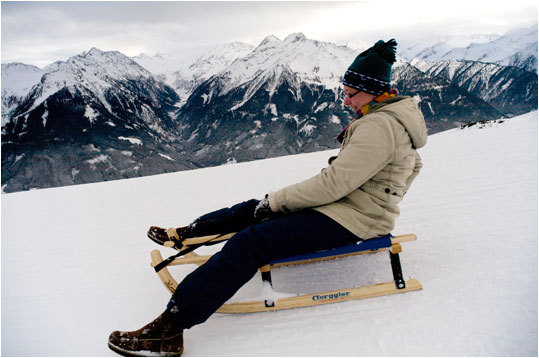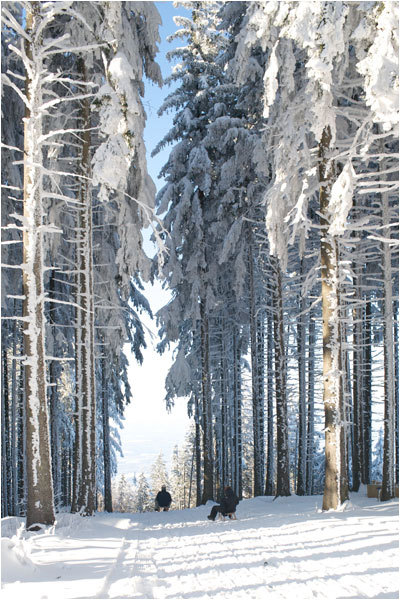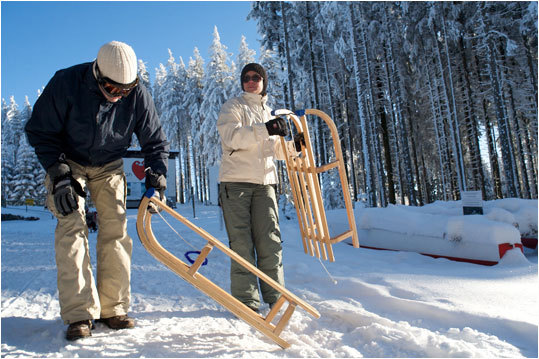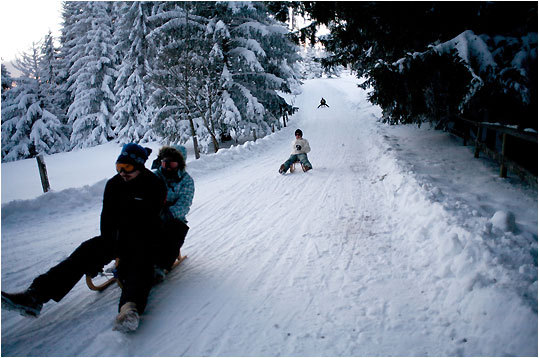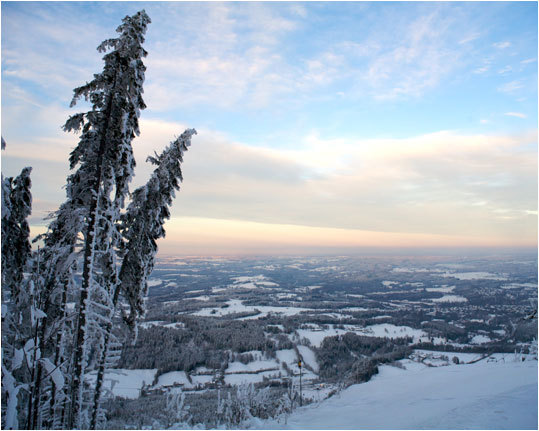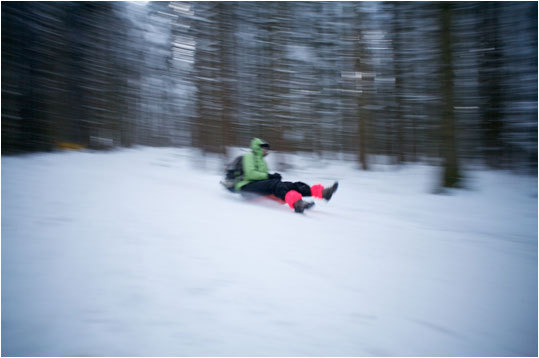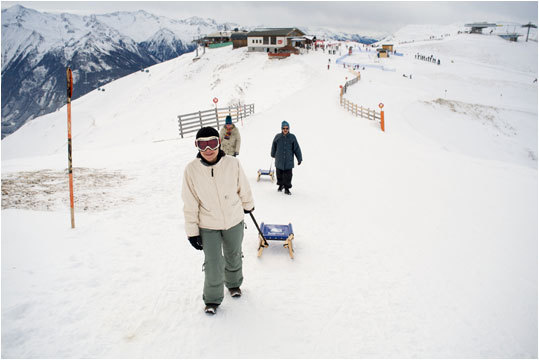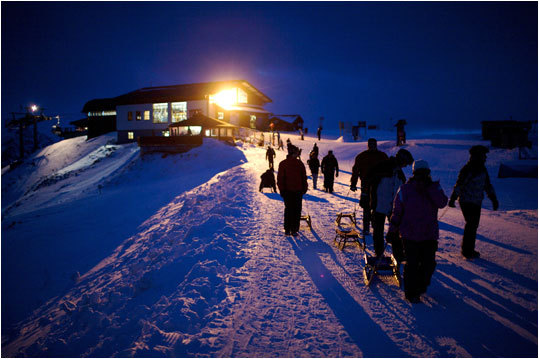Recent Writing
"Fields of Fire"
Just 10 kilometers from the frenetic pulse of central Naples, in stark contrast to the Italian city’s impressive volcanic-stone churches and effortlessly stylish urbanites, sits a boxy, concrete building. Inside this unremarkable government outpost, accessed through a pair of sliding glass doors, is the Vesuvius Observatory monitoring room, lit by the cool glow of 92 flat-panel screens. On each screen, volcanic activity readings, including those from seismic devices sensitive enough to pick up a passing bus, blink and beep in real time. In the middle of the room is a desk. And in the middle of that desk is a single red phone.
Twenty-four hours a day, 365 days a year, there are at least two people in the room, ready to pick up the phone and advise the national civilian defense in the event of a volcanic emergency.
But Mount Vesuvius, its iconic cone rising conspicuously on the city’s eastern flank, is not the only concern. A potentially even more destructive volcanic giant is tossing fitfully in its sleep, right on Naples’ doorstep: the caldera of the massive volcano system Campi Flegrei, which translates to the fields of fire.
(Read More...)

Amid a decade-long global rhino poaching epidemic, many conservationists wonder how long the animal will survive in the wild. Rhinos are killed for their horns, which are sold illegally in Vietnam and China — at street prices higher than gold — for their purported medicinal qualities. For example, just in South Africa, rhino poaching incidents skyrocketed over 9,000 percent, from 13 in 2007 to 1,215 in 2014. The country responded with dramatically increased funding and the militarization of anti-poaching teams, resulting in a small drop in 2016, to 1,054 poachings.
Now, conservationists are scrambling to save the last five rhino species left on Earth, limited to ever-shrinking territories in Africa and Asia. Some governments are even experimenting with the controversial idea of allowing farmers to raise rhinos to harvest their horns (which can be painlessly trimmed and regrown like fingernails). Russ Juskalian traveled to South Africa, Vietnam and Indonesia to document the animals’ last stand.
(Read More...)

A half-dozen young, mostly male engineers sit in a bright, open office digging through a mountain of code. Multi-monitor work stations sit on desks strewn with laptops, tablets, and headphones. This is not a tech startup, however. It’s one room in the Bosch automotive plant near Immenstadt im Allgäu, Germany. Today these factory workers are culling immediate production inefficiencies and developing systems that they hope will, by next year, allow the factory’s machines to diagnose their own problems, order replacement parts, and anticipate necessary maintenance hours or even weeks in advance.
Through a bank of large windows opening from the computer room onto the shop floor, row after row of machines hum a percussive melody as they turn out small parts—fuel injection nozzles, electronic safety control systems, mechanical brake systems—destined for car companies including BMW, Volkswagen, and Tesla.
Atop each machine is a stoplight showing its efficiency status, and large overhead monitors nearby display real-time production information. Operators with tablets tap into data being captured by more than 100 sensors on each machine. Managers see down-to-the-minute values for everything from electricity to compressed air. They can break out individual machines, even individual tools. Everything traceable is tracked by RFID tags. The displays show not just numbers in charts but also visually accurate, cartoon-like images of the actual machines and factory floor.
(Read More...)

If you want to explore our origin story, keep an eye out for the white stinkwood trees. That, at least, is what paleoanthropologist Christine Steininger says as we push our way up a gentle incline covered in waist-tall, brown and green grasses near Maropeng, a town about 45 minutes from Johannesburg, South Africa.
The land here is arid and open, except for hardy stinkwood and wild olive trees, which cling to existence in small patches. Their survival depends on putting down roots deep enough to sup on what little water collects in scattered depressions and crevices — the same spots where the fossils of our earliest ancestors have been found.
Indeed, at the first strand of trees is a fissure so thick with fossils that they protrude from the breccia, a type of conglomerate rock, in cartoonlike abundance. There’s enough material here for generations of scientists to excavate, says Steininger. And yet this particular trove is but one of a number that make up what is perhaps the most important network of early hominin sites anywhere on the planet.
(Read More...)

The very foundation of the free Web is at risk, and Wladimir Palant is partly to blame. Now he thinks he can fix it.
The problem, as he sees it, is an "outright war" between online advertisers and the rest of us. As intrusive online advertising has proliferated—in banners, pop-ups, and videos that distract readers, cover up content, clog the Internet, and track your Web browsing—easy-to-install programs that block those ads have soared in popularity. Take away the ads, and so goes the revenue that makes huge parts of the Web possible.
Palant is the creator of Adblock Plus, which has 60 million active users, making it the most popular of the ad blockers. That gives Palant, a shy, privacy-minded software developer from Moldova, and his company, Eyeo, an outsize role in determining the future of Internet advertising. His solution is to force a truce by letting only certain ads through the blocker. In other words, his goal is to save the Web by making ads less annoying.
(Read More...)
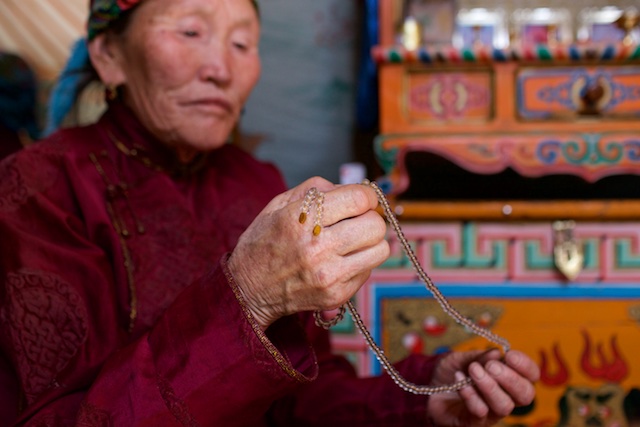
Dense clouds suffocate the sky over Mongolia's Khangai mountain range, and Amy Hessl, by her own admission, is about to cry. She sprawls on the dry, scrubby ground, defeated. As the temperature drops on this early June day and the clouds give way to icy raindrops, all Hessl can mutter is, "I feel sick."
Hessl, a geographer from West Virginia University, studies tree rings for what they can tell us about climate and past environments. She's come to Mongolia to investigate one of history's most enduring puzzles: how Genghis Khan set forth from such an inhospitable place to beget the largest contiguous land empire the world has ever known. Her team, working to unearth this ancient mystery, has found clues of another climate-driven transformation — one that's still underway. It's a tale in which herders and nomads are streaming to urban centers while resources are being exploited without long-term environmental planning, and people, individually and as a society, have no choice but to adapt.
(Read More...)
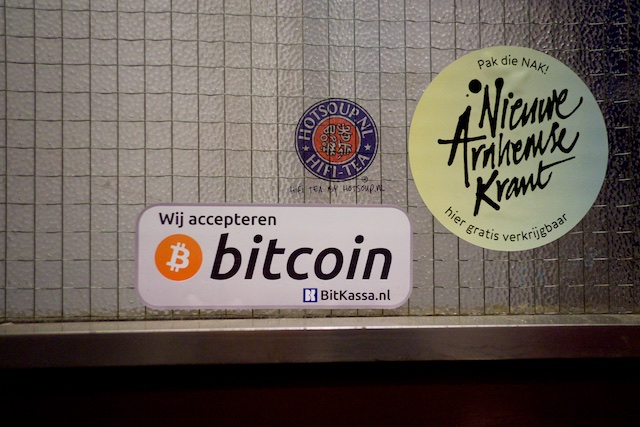
Propped up next to me on the red sofa in my room at the boutique Hotel Modez in Arnhem, the Netherlands, my iPad has its screen on the Bitcoin exchange Bitstamp.net, and the value of the cryptocurrency is dropping, moment by moment. At breakfast one bitcoin had been worth over $400, but the value has been sinking for the past 30 minutes and has now hit $383. I know I’m blowing it.
When the price of a bitcoin tumbles by another $10, I am unwilling to risk any further losses. My stomach sinking, I head to reception to pay my bill. My exchange rate later turns out to have been near the day’s low, and I feel like a sucker.
(Read More...)

In 1889, Andrew Carnegie wrote in "The Gospel of Wealth," "The contrast between the palace of the millionaire and the cottage of the laborer with us today measures the change which has come with civilization. This change, however, is not to be deplored, but welcomed as highly beneficial." Carnegie felt that even the poor could be shown that public giving, which benefits the masses, is "more valuable to them than if scattered among them through the course of many years of trifling amounts."
Our own time has increasingly been called a New Gilded Age. A few weeks ago, after Oxfam International published a report showing that the richest eighty-five people in the world have the same combined wealth as the poorest half of the population, Slate’s Will Oremus wrote: "Global capitalism, we have a problem." On Monday, the Chronicle of Philanthropy added another angle to the debate, with a report showing that the fifty most generous philanthropists in the U.S. gave a combined $7.7 billion to charity in 2013. This was a modest rise from $7.4 billion the previous year, but almost double the amount given in 2009 during the recession. "I think now that we’re coming into this age where the inequality issue has become so serious it seems very reminiscent of the way people, I think, felt about Carnegie and Rockefeller," Stacy Palmer, the Chronicle’s editor, told me.
(Read More...)
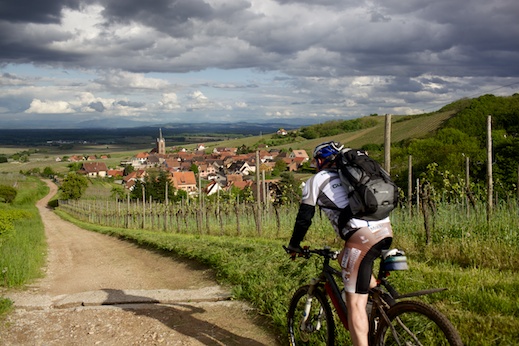
The man, in his 60s, emerged from a side street in the small town of Oberrotweil, Germany. He didn’t say much, but we heard his message, which was printed on his T-shirt: "Wine improves with age. I improve with wine."
He flashed a mischievous smile, and continued down the road.
For the seven of us on this trip — a group of friends brought together last May by a shared love of cycling and moderate inebriation — the moment came to represent our journey in search of an oddity: A small border region where France and Germany blend together culturally and climatically, conjoined in the oenological pursuit of mineral-laced, crisp, white wines.
(Read More...)
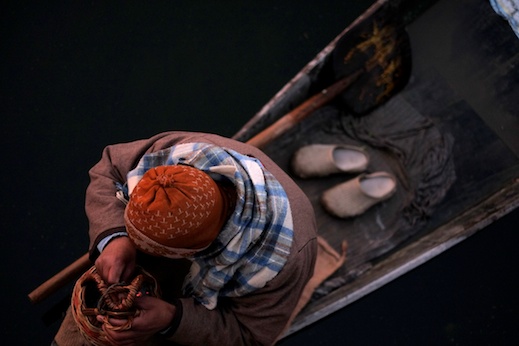
On a frigid night in Gulmarg, a Himalayan outpost deep in Kashmir, a friend and I sipped sweet tea and warmed ourselves next to a wood stove while a local ski guide named Javed stood in front of us, roaring like a bear. "Baah! Baah!" he shouted, his hands outstretched like claws. "I thought it was going to kill us," Javed said of the Asiatic black bear he had encountered a few days before while skiing in the backcountry.
Which reminded him of the time he skied off a natural jump in the forest and nearly landed on a snow leopard. "Where did that happen?" I asked.
"Babareshi," said Mushtaq, another guide. "The place we skied today."
(Read More...)
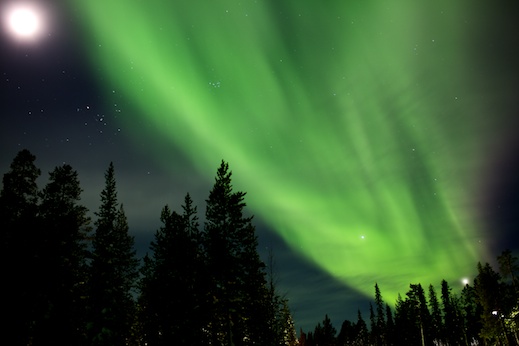
"LADIES and gentlemen, the northern lights are on," announced a member of our group, breaking the predinner weariness. It had been another long day of cross-country skiing, but his message spurred us to action. In a flash, the cabin was filled with the sound of crinkling jackets and snow pants; a few minutes later, Arctic air was blasting across our faces.
As I made my way across the snow, I craned my head skyward. Streaks of green plasma arced beyond silhouettes of slender pines. The effect was something like the swirls of phosphorescent plankton magnified a billion times. When I wandered back to our cabin hours later — after bumping into a pair of aurora borealis-hunting Finns in the woods who offered swigs of coffee liquor — I nearly stumbled into a reindeer.
(Read More...)
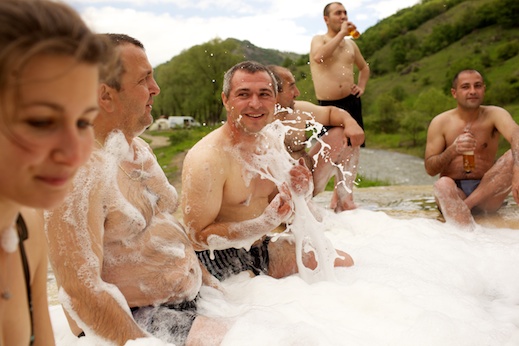
STANDING on a limestone ridge in the foothills of the Lesser Caucasus Mountains, I surveyed the landscape that lay before me. To the west, illuminated by a late-day sun and with ever more craggy peaks as a backdrop, was Vankasar Mountain, capped by a solitary, ancient church. To the east, yellow grassland and scrub stretched to the horizon. And then there was the ghost city of Agdam, its thousands of ruined buildings representing the last exchanges of a late 20th-century conflict that many people have never heard of.
I had come to the breakaway Southern Caucasus region of Nagorno-Karabakh expecting a land of extremes. Nagorno-Karabakh, an ethnically Armenian enclave whose name means "mountainous black garden," appears on few maps. Its tumultuous recent history would affect any traveler, no doubt, but for me, the experience of visiting this place had a personal dimension. My grandmother had fled Anatolia as a girl, escaping an Armenian genocide at the hands of the crumbling Ottoman Empire. To come to Nagorno-Karabakh, a place where Armenians have asserted their right to live freely -- but at the cost of having forcibly removed their Azeri neighbors -- generated mixed emotions, to say the least.
(Read More...)
THE absurd part wasn’t sprinting, nearly naked, through a frozen warren of tunnels carved into the dense snow on top of a glacier. It was that I was desperately trying to make it outside, where the nighttime temperature was minus 5 degrees Fahrenheit, and trillions of moonlit snowflakes were swirling in the wind. By the second step into this maelstrom on Zugspitze, the highest peak in Germany, all feeling in my bare feet had vanished, but salvation lay 20 feet ahead in the billowing steam of an outdoor hot tub.
Just 80 minutes by train from Munich, the German town of Garmisch-Partenkirchen (population 26,000) is a wonderful spot to spend a few days exploring the wintry beauty of the Bavarian Alps. And with countless activities, and plenty of cute B & Bs and traditional German gasthäuser, you need not spend the night, as I did, more than 6,000 feet above the town in an igloo.
(Read More...)
Worry. Apprehension. Anxiety. These were not what I thought I would be feeling. And yet, as I headed to the airport to meet my parents for our first long trip together in nearly a decade, a troubling thought dogged me: What if this was a bad idea?
For the past eight years, I had made a vigorous case to my parents that they needed to visit Southeast Asia. But what if they hated it? What if they got sick? What if we weren’t talking to one another when we got home?
I realize I am not the first person to be racked by such questions. After all, 76 million people were born during the baby boom, and with their children finally navigating the waters of adulthood, the way these two generations travel together is set for a dramatic change.
(Read More...)
Tucked away in the basement of an iconic office tower shaped like four engine cylinders, engineer Werner Huber is telling me about the joy of driving. We're here at BMW headquarters, in Munich, Germany—capital of Bavaria, and arguably of driving itself. But Huber oversees strategic planning for advanced driver assistance systems, so in a way, his job is to put an end to driving—at least as we know it.
"I think that in 10 to 15 years, it could be another world," Huber says. He's not willing to predict exactly what driving will look like then, but he's certain humans will be doing a lot less of it.
For manypeople, automated cars call to mind those high-tech vehicles with a rotating periscope on top that Google has been driving around California. But Huber and executives at other European automakers say the automated driving revolution is already here: new safety and convenience technologies are beginning to act as "copilots," automating tedious or difficult driving tasks such as parallel parking.
(Read More...)
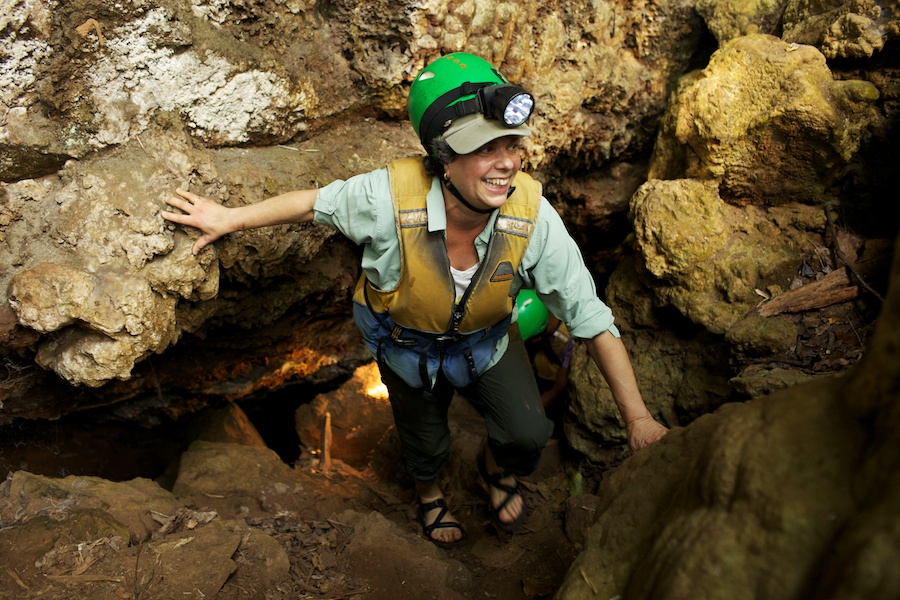
MY mother shot me a concerned look. "No," I said, anticipating her question, "This isn't our stop." I knew what she was thinking: This is exactly what we were trying to avoid
After hundreds of gut-testing curves along a mountain road, the minibus we were riding in had stopped to exchange passengers in the once tranquil northern Thailand town of Pai. Here, in profusion, were unsettling signs of a backpacker-cum-new-age gold rush: yoga studios, tattoo parlors, banana roti, yurts, patchwork and reclaimed fabric clothing, countless guesthouses and scores of cafes (a few with flat-screen TVs) selling "organic" everything. All of it was bathed in free Wi-Fi. All of it was overwhelmed by gridlocked traffic.
Our destination, 90 minutes and a mountain away, was the Shan village of Ban Tham Lod, a sort of anti-Pai where I hoped to experience the Thai countryside in shades of how it used to be. My parents, both retired teachers, were joining me for two days before moving on to a volunteer gig.
(Read More...)

WITH its cobblestone streets, vibrant intellectual community and relaxed ambience, Lund is an archetypal college town in Sweden's southernmost county of Skane (pronounced SKOH-nah). Surrounded by farmland and rolling fields, the town -- founded sometime around 990, when the region was still part of Denmark -- is thick with history, both modern and ancient, making it an ideal overnight visit from Copenhagen.
If you talk to a local -- and you will, since everyone from the aproned woman behind the bakery counter to the spiky-haired philosophy student is eager to explain the town's history in flawless English -- you'll hear that Lund was founded by the Viking Sweyn Forkbeard. (By some accounts, Forkbeard, one of Denmark's kings, also founded Copenhagen, which is less than 40 minutes away across the Oresund strait.)
But if you talk to a local butcher, you'll get a different history: Lund was built on sausage, sometime around 1960. That sausage is lundaknake, a pungent type of pork and beef knackwurst made only here, and only by Holmgrens & Company. The story goes that when industry was blossoming in the region in the second half of the 20th century, owners and laborers alike more or less survived on the stuff, which has a gamey, smoked flavor and makes an audible snap when you bite into it.
(Read More...)
SAN FRANCISCO - A few years ago, I moved back to the East Coast from California, returning to the land of above-average pizza. It was a classic example of gaining one thing only to lose another. In exchange for a cornucopia of tomato sauce, cheese, and yeasty dough there would be no burritos.
That's not entirely true. Since coming back, I have eaten a dozen or so burritos. But the best left me feeling unsatisfied. The worst sent me to a place between irritation and gloom.
(Read More...)
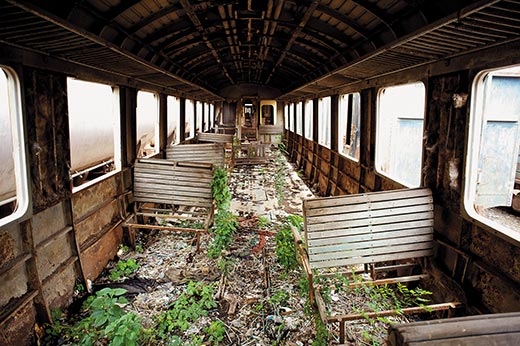
We were a few miles from the nearest village when we ran out of gas. The motor, a small thing perched on the back of a queen-size bamboo platform, spat out a few tubercular-sounding coughs and gave up. There were three of us riding this Frankenstein's pump trolley, known in Cambodia as a norry, including my interpreter and the conductor, a short, elderly man with sunbaked skin and the permanent squint of failing eyesight. The morning was wretchedly hot, and in addition to a long-sleeved shirt and pants to block the sun, I wore a hat on my head and a scarf around my face. One could stay dry when moving along, the oncoming air acting like a mighty fan. But as the norry rolled to a slow stop, sweat bloomed on the skin almost instantly. I'd traveled across a broad stretch of Cambodia on the "bamboo train," as this form of transportation is known in English, and now I considered what getting stuck here would mean.
(Read More...)
From shore, David flashed a thumbs up: the signal for me to go ahead. I pulled down on the control bar attached to the harness on my waist, and the 20-foot-wide kite emblazoned with a dragon arced across the sky. Instantly, a jolt was transmitted through the lines that connected the kite to the harness, and I shot across the water.
Moments before, as I bobbed in the clear, warm sea off the northern coast of the Dominican Republic, a thought came to mind: Wouldn't it be more relaxing to lie on the beach with a cold Presidente beer? The thought was replaced by exhilaration as I surfed under kite power for a few seconds before tumbling into the water with an anticlimactic splash.
(Read More...)
Thick strips of pork belly sizzled on a charcoal grill built into the table. A small mountain of garlic drenched in sesame oil simmered in a metal bowl next to the meat, a few cloves turning a golden brown. The rest of the table was packed with small dishes filled with accompaniments: perilla leaves, two types of kimchi, potato salad, lettuce, red bean paste, shredded cabbage and peppers, something resembling molten scrambled eggs, and various dipping sauces.
Savory aromas wafted from the grill, mingling with the sharp smell of the kimchi, a spicy, pickled cabbage condiment. The mental fog that had dulled my senses since I stepped off a trans-Pacific flight earlier in the afternoon was pierced by a mouthwatering thought: I had come here to eat as much as possible in a week.
(Read More...)
"I did AA about five times," says Susan, recalling her failed attempts to get a serious drinking problem under control. "I tried a brief stint in Northern California rehab, Antabuse, acupuncture, hypnotherapy, psychological therapy for over a year. Anything-you name it." Nothing worked for Susan-a successful TV and film actor whose name has been changed because she has yet to publicly disclose her struggle with alcoholism-whose cycle of drinking would include months of trying to stay sober followed by dangerous weeklong binges she refers to as "rampages."
Then Susan learned about the drug naltrexone and a treatment protocol known as The Sinclair Method (TSM). The problem was that most of the doctors familiar with the drug knew of naltrexone's other use to reduce craving for alcohol-but only when used if the subject is also abstaining from alcohol. But that's not what Susan had in mind. "For me, the idea of being completely sober for the rest of my life was as daunting as being an alcoholic," says Susan. She wasn't prepared for abstinence, and when she had tried it in the past it hadn't worked. Fortunately, TSM not only allows drinking, its central tenet basically requires it. TSM's instructions are simple: take an inexpensive dose of generic naltrexone about an hour before drinking, every time you drink.
(Read More...)
My father's journey down the Lyme-disease rabbit hole started with a swollen wrist. An oblong rash appeared that was hot to the touch, and sore, but he didn't remember getting bitten by anything. When the rash didn't go away in about a week, he walked three houses over to visit a friend of the family, a retired doctor who once worked in the emergency room at a regional hospital.
Dr. Dave, as we call him, suggested watchful waiting, particularly as my father has a history of intense local reactions-swelling and tenderness-to insect and arachnid bites. But when the rash didn't get any better over the next couple of weeks, Dr. Dave told my father to see a physician.
(Read More...)
"You see that?" said Paul Yi, my childhood friend, pointing to an unremarkable looking Kumho Tire billboard over the highway. "It's a tank trap. If North Korea invades, we'll blow it up and it will block the road."
We were just a few minutes outside Seoul on a tour bus headed to the Korean Demilitarized Zone, which is within about 30 miles of the city's metro population of over 20 million people.
(Read More...)
PHONSAVAN -- As the small, French-built prop plane descended through the clouds over mountains that opened into a high-elevation plateau, I spotted clusters of circular-shaped depressions scattered across the ground. As the plane flew lower over terraced rice paddies and rolling hills, I saw that a few of the holes were the size of a person, others as large as a house.
I had been warned that I might spot craters when flying into this part of northern Laos near the Vietnam border, but actually seeing these decades-old remnants of some of the more than half a million "secret" US bombing missions during the Vietnam War was a surprise. I was here to visit the Plain of Jars, one of Southeast Asia's most mysterious archeological sites, but what I found was more complex.
(Read More...)
"When you're in the field with the elephants, keep an eye on the babies. They are very, very naughty."
Naughty, I thought? How can an elephant be naughty? "You'll see," said Jack Chaikarn, our guide.
He knew his advice would go unheeded because baby pachyderms are particularly endearing: They're absurdly small next to their mothers, they flop around and play in the dirt like puppies, and it seems all their babyish curiosity is directed into a constantly searching, miniature trunk.
(Read More...)
The setting could have been any typical Central European beer garden. There were long rows of wooden tables stained in dark, rich hues; half- and full-liter beer mugs hanging from metal racks; and two beautifully crafted brass decoction tanks used for mashing traditionally brewed beer. But on this warm afternoon in November, I wasn't in Plzen, or Munich, or Bruges. I was at the Hoa Vien Brauhaus in Ho Chi Minh City, Vietnam.
The humid air buzzed with conversations in melodiously tonal Vietnamese. This, too, surprised me. Considering that Hoa Vien's founder is an honorary consul of the Czech Republic (that is, a noncareer diplomat), I had envisioned throngs of expatriates knocking their glasses together. But the crowd was made up of young Vietnamese men in slacks and button-down shirts - lanyards with key cards still dangling around their necks - and couples chatting under large, shady trees. All part of Vietnam's growing generation of hip, young professionals.
(Read More...)
BAD TOLZ, Germany - Where I'm from in New England, the biggest sled run in town is called Suicide Hill. Steep, and a couple of hundred feet long, this locally infamous slope doles out a handful of twisted ankles and bruised egos each year. That's why I was shocked when Steffi, my Bavarian girlfriend, upon seeing it for the first time, chuckled and said, "Oh, that's how we used to sled when we were babies."
She then described a fantastical vision of the Alps, where serpentine mountain roads are converted to hourlong sledding runs - called "rodelbahn" - and mid-mountain pubs supply fresh beer to thirsty Europeans. A rodelbahn, it seemed, was to my neighborhood hill what the Autobahn is to a parking lot. By the time Steffi mentioned the possibility of us spending the holidays with her family in Germany, I was already looking for tickets.
(Read More...)
The New York State Psychiatric Institute looks like a bastardised version of the Louvre's glass pyramid, sliced down the middle and hacked on to the side of a low-rise tower. Three floors up is the lab where Carl Hart conducts experiments that, once explained, invariably prompt the same response: is that legal?
Hart pays volunteers to take ecstasy, methamphetamine or marijuana. He then monitors everything they do, eat, drink and say. He draws blood on the hour, sometimes more frequently. He searches their kitchen waste to see if they didn't finish any of their food. And to top it off, Hart's recruits -- who live in a windowless, fully surveilled apartment for up to three weeks -- spend hours taking computer-based cognitive tests, clicking away in a drug-induced euphoria, or a drug-withdrawal dysphoria.
(Read More...)
A few days before I was scheduled to fly into the city, I spotted a listing online for the 2d annual Barback Olympics, a raucous event in which the city's "top barbacks" compete in grueling races that primarily involve carrying kegs, running across car-tire obstacles, and rapidly drinking beer. More remarkable than the event itself was its sponsor: Fratelli Branca Distillerie, maker of an old Milanese liquor called Fernet Branca.
If you've never heard of Fernet - and unless you've spent a lot of time in Italy or Argentina, you probably haven't - this may not mean much. But the Fernet distillery sponsoring a drinking event in the United States is akin to a truffle-oil maker sponsoring ESPN's X Games.
For reasons not entirely clear, San Francisco has an obsession with the inky liqueur. Ask for Fernet at most bars in New York, Chicago, or Boston, and be prepared for blank stares. But in the 49 square miles of San Francisco, where over 50 percent of the country's Fernet consumption occurs, ordering the drink gives one automatic insider status.
(Read More...)
Now that fall has arrived and our precious daylight hours dwindle, those hoping to stay fit by walking, jogging, or cycling outdoors will have to contend with the dangerous road conditions imposed by the darkening days. In the United States, pedestrians make up 11 percent of all vehicle-crash fatalities. That's roughly 5,000 pedestrian deaths per year, or one pedestrian fatality every 105 minutes. If you include cyclists, the numbers are higher by nearly another 700 fatalities per year. Not surprisingly, the chances of ending up on the wrong end of a car bumper only increase as the days grow shorter. A 2008 report by the National Highway Traffic Safety Administration fingers autumn as the most dangerous part of the year for pedestrians, accounting for 29 percent of pedestrian-related fatalities. The most dangerous hours of the day? From about 6 p.m. to 9 p.m., the time immediately before, during, and after dusk.
(Read More...)
"I had a gun sitting on top of the computer monitor," says Bill McConnell. "And I typed 'suicide' plus 'headache' into the search bar to leave an explanation for what I was about to do."
McConnell, who is 39-years-old and wears a blue and white baseball cap, is commiserating with fellow sufferers of cluster headaches-- a condition some doctors call the most painful known to medical science, and one that numerous sufferers say nearly drove them to take their own lives-- in a room at the Hyatt Regency O'Hare on the outskirts of Chicago. He, like the rest, arrived a day early for the annual cluster headache conference organized by a group called Cluster Busters.
Though they look like ordinary people, and could easily be your neighbors or colleagues, clusterheads, as they jokingly refer to one another, have excruciating and extraordinary life stories. Their condition is well documented, poorly understood--and devastatingly painful. The medications they use to treat or at least reduce the suffering are sometimes life-threatening, often physically damaging, and usually psychologically and emotionally debilitating. ("The disease won't kill you," says McConnell, "but the treatments might.") As a rule, they've gone mis- or undiagnosed for years, been called hysterical by general practitioners and neurologists unfamiliar with the condition, and endured countless failed attempts at a cure. Now, thanks to an active online community, and organizations like Cluster Busters, some sufferers are finding relief in an unlikely treatment: the serotonergic psychedelic drugs LSD and psilocybin, two chemicals that helped fuel the psychedelic revelry of the 1960s. Anecdotal reports of the drugs' effectiveness against cluster headaches have even begun to attract the attention of major research universities.
(Read More...)
Of all the depressing statistics about a lifetime of consumer existence, this may be the most distressing: each of us is destined to spend roughly 1.2 years on hold. Yes, you read that correctly. More than a year of your life will be spent on the phone listening to Muzak stations like Aura ("Taking the primarily instrumental musical form to experimental and inspirational places"), Moodscapes ("Airy and relaxing"), and Tropical Breezes ("Those carefree days of sun, fun, and frozen cocktails") while being serially apologized to by robotic voices better calibrated to taunt than sympathize.
(Read More...)
When Jon Matthews was diagnosed with mesothelioma, a particularly deadly form of asbestos-caused lung cancer, his prognosis was dire: he was told not to expect to survive more than nine months. Still alive a year and a half later, Matthews decided to make a bet with his bookie, at 50-1 odds, that he would live past the 25-month median survival for people with his diagnosis. He won that bet in 2008 . Last month he won a second, similar bet for more than $8,000, and went back to his bookie with a third wager: that he would survive until at least the middle of 2010 .
Stories like this play to an archetypal, against-all-odds medical narrative, and stoke the imagination. But despite the recent media chatter about well-known people living with dire cancer diagnoses -- such as Apple CEO Steve Jobs, Sen. Ted Kennedy, and actor Patrick Swayze-- there has been little discussion of the science behind prognoses.
(Read More...)
The charge of plagiarism carries a special sort of shame. Take the case of Kaavya Viswanathan, the young writer whose 2006 debut novel, How Opal Mehta Got Kissed, Got Wild, and Got a Life, contained so many passages lifted from other books that her writing career was over by her junior year at Harvard. For those whose literary taste is at the opposite end of the spectrum from chick lit, consider Dante: he put the fraudulent in an even deeper circle of hell than the violent.
But could some alleged plagiarists--like Maureen Dowd, Chris Anderson, Elizabeth Hasselbeck, and even Viswanathan, who all either deny the charge, or blame their copying on unconscious mistakesÑbe guilty of psychological sloppiness rather than fraud? Could the real offense be disregard for the mind's subliminal kleptomania? And if it is real, is unconscious copying (or "cryptomnesia" to those who study the phenomenon) preventable? Or, seeing as Nietzsche ripped off a passage of Thus Spoke Zarathustra from something he'd read as a child, and former Beatle George Harrison was found guilty, in court, of unconsciously copying the music for his hit song, "My Sweet Lord"--is cryptomnesia both unavoidable, and the perfect excuse?
(Read More...)
Clay Shiry, pt 1: The New Luddism
Clay Shiry, pt 2: The Newspaper's Late Discovery of Civic Function
Clay Shirky teaches at the Interactive Telecommunications program at New York University and is the author, most recently, of Here Comes Everybody, about how new means of communication are changing the social environment. CJR's Russ Juskalian recently spoke with Shirky about knowledge, the Internet, and why we shouldn't worry about information overload.
(More - pt 1...)
(More - pt 2...)
Michael Posner: How Attention Networks Work
Cognitive neuroscientist Michael Posner is an internationally recognized expert on attentional networks and cognition. CJR contributor Russ Juskalian recently talked to Posner about attention, cognition, and how media consumption affects both.
(More...)
Gary Marcus: Attention and the Brain
Gary Marcus is a professor of psychology at New York University, where he studies developmental cognitive neuroscience. In his latest book, Kluge: The Haphazard Construction of the Human Mind, he writes about the clumsy way in which our brains evolved. CJR's Russ Juskalian recently talked with Marcus about the brain, and what information overload might mean for cognitive development.
(More...)
David Shenk: Data Smog
Journalist David Shenk has been writing about the topic of information overload for over a decade. In his 1997 book Data Smog, Shenk was one of the first to identify the problem, explore it in detail, and propose some possible solutions. CJR's Russ Juskalian recently talked with Shenk about information overload and its ramifications for journalism.
(More...)
Maggie Jackson: The Erosion of Attention
Journalist Maggie Jackson is the author of 2008 's Distracted: The Erosion of Attention and the Coming Dark Age. She recently talked with Russ Juskalian about the dangers of the divided attention span and how we might combat information overload.
(More...)
It happens to all of us: the moment when one finds out that more megapixels and better photographs aren't always the same thing. To be disabused of the Megapixel Myth--this decade's analog of the Megahertz Myth--can lead to an existential buyer's crisis in miniature.
Disbelief, at first, gives way to a sort of embarrassing self-questioning: You mean, 15 megapixels isn't three times better than 5 megapixels? This year's model isn't better than last year's? I spent all that money upgrading--for nothing?
(Read More...)
All Shawn McCully wanted was a lens for his digital single-lens reflex camera. Little did he know, he was searching for the holy grail of amateur photography -- and hoping to do it on the cheap.
"I just wanted to be able to shoot family and friends indoors without a flash," he said. He also wanted his digital Canon 40D to take photos with a buttery smooth background and only the tiniest area in focus.
(Read More...)
In February 1982, physicians in Medford, Oregon encountered an unknown pathogen that waged a sort of intelligent biochemical warfare against our bodies. After being ingested, the rod-shaped bacteria--small enough to fit 500 of them side-by-side across the diameter of a single period in twelve-point font--were able to monitor their surroundings for human hormones to determine where they were inside their victims. When they received the signal that they had reached the intestines, the rods sprouted tails that operated as proton-powered outboard motors, swam towards one another, and constructed their nano-weapons: syringes small enough to pierce human cells and deliver injections of treacherous chemical instructions.
(Read More...)
When John Edwards bowed out of the Democratic primary in January, the presidential race lost its most vocal supporter of so called green-collar jobs. His former opponents have carried the mantle forward, however-Senator Hillary Clinton in particular, who introduced an amendment to the 2007 energy bill, calling for green-collar job training.
(Read More...)
The debate about the relationship between intelligence and race rages on in the wake of some controversial remarks made by Dr. James Watson, published in the Sunday Times of London in October. Strangely absent in these arguments, which are based on I.Q. research, is a discussion of what the "Intelligence Quotient" is supposed to measure.
(Read More...)
Recent Photo Assignments
"Kashmir: Where Skiing Is Only Part of the Adventure"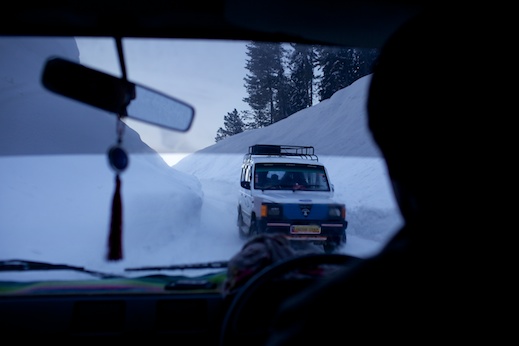
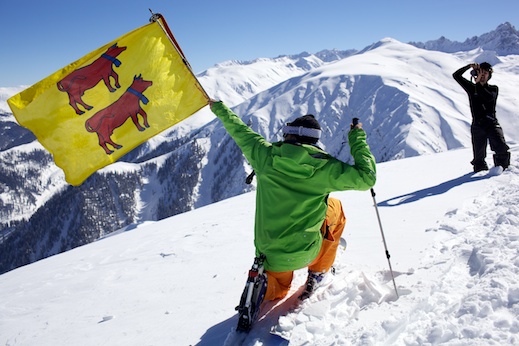
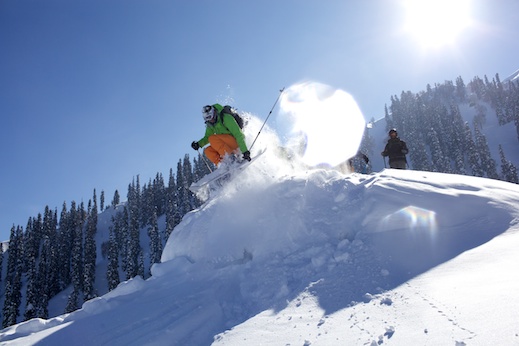
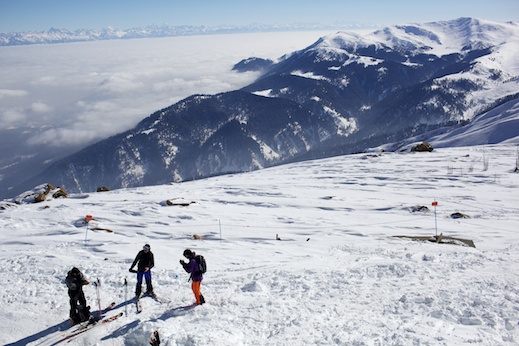

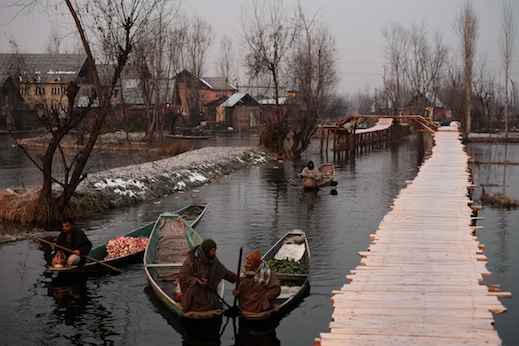
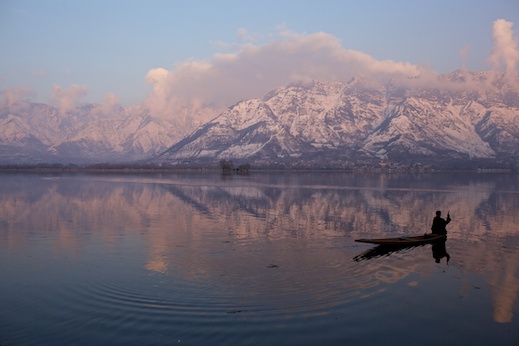
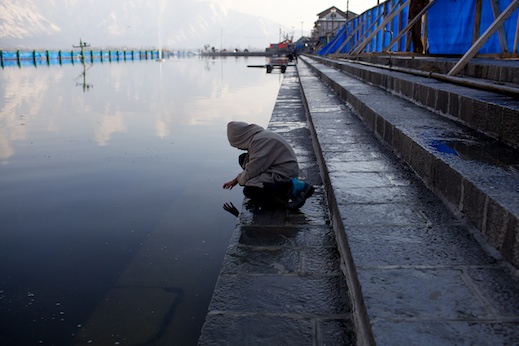
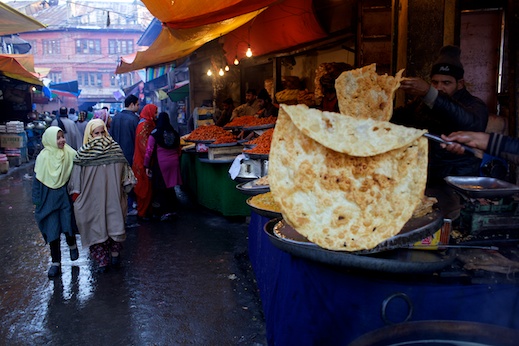
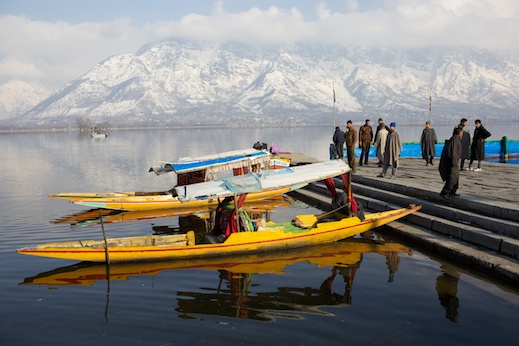
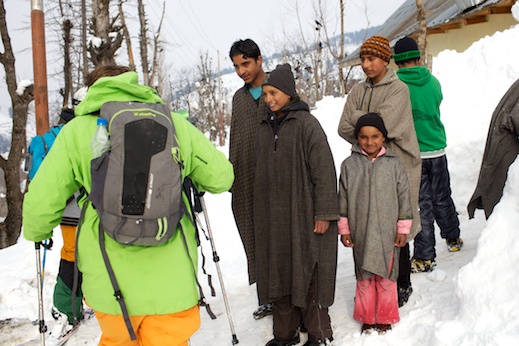
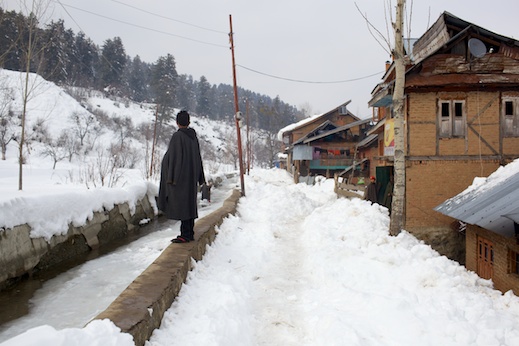
"Finnish Lapland"

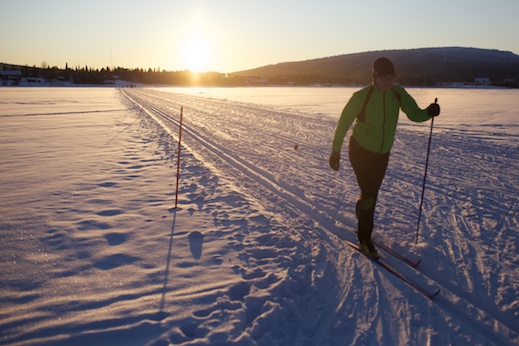
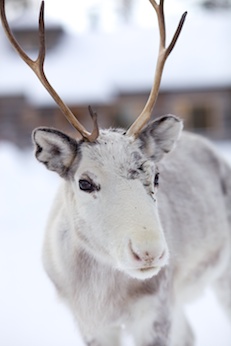
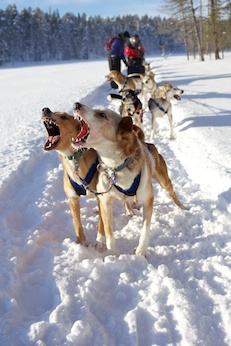
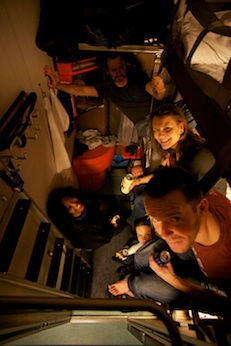
"Nagorno-Karabakh"

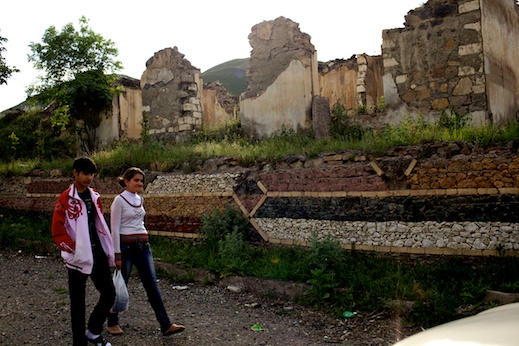
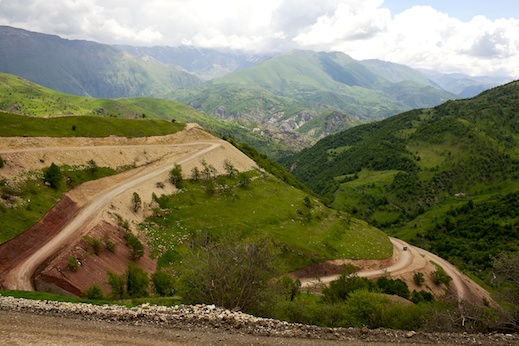
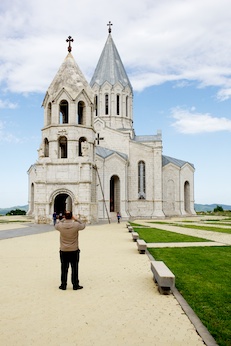
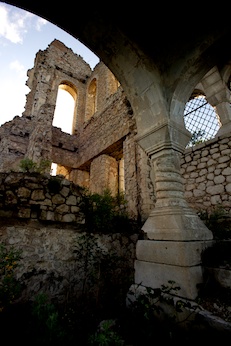
"Cave Hunting in Thailand"
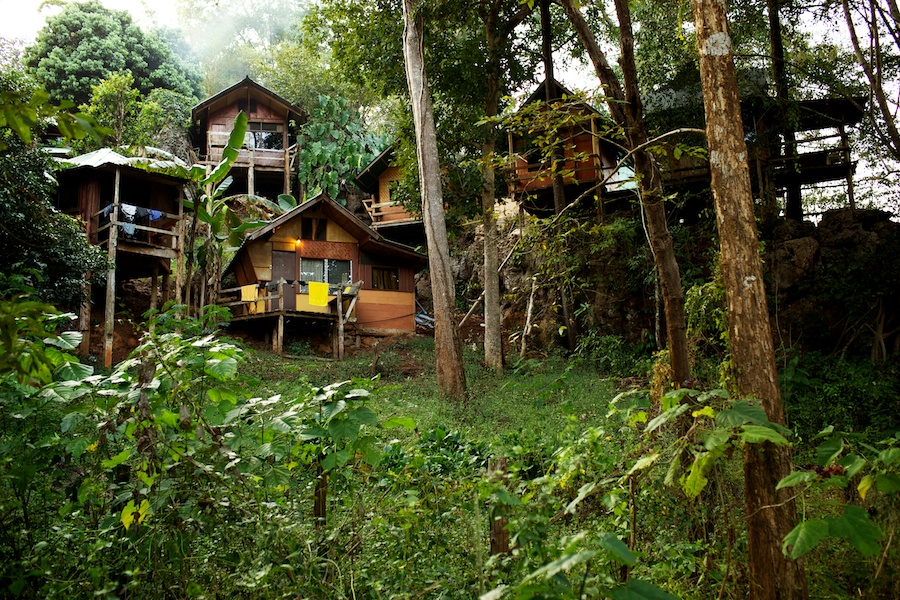
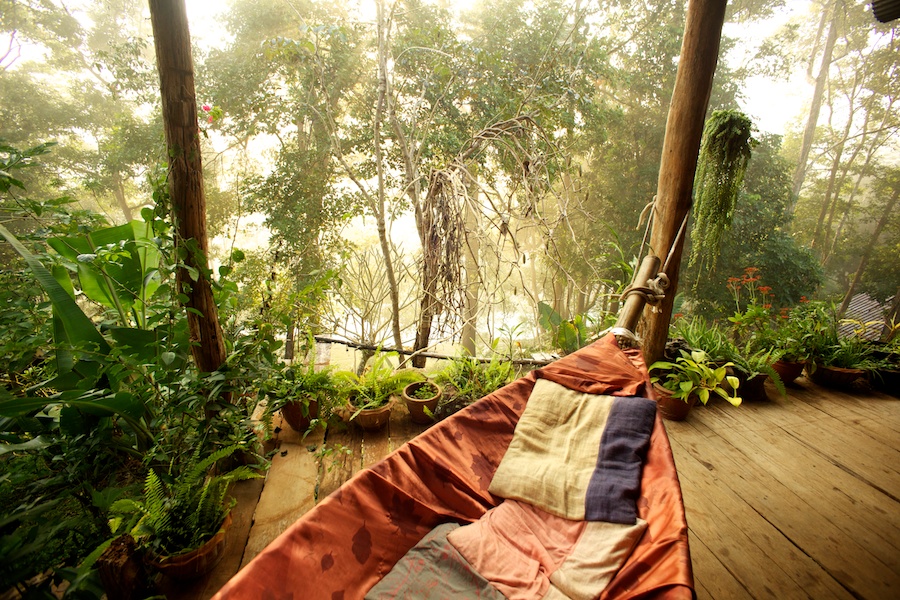
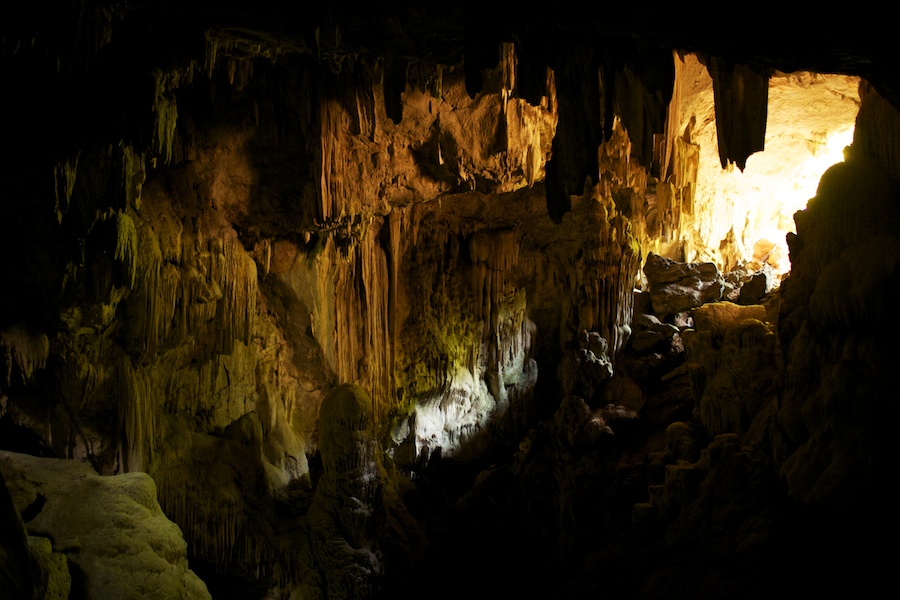

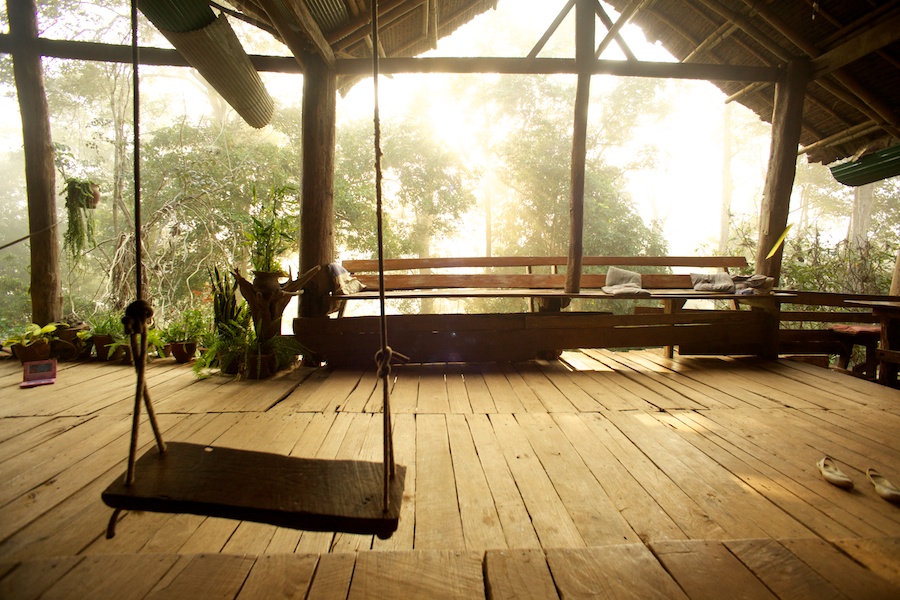
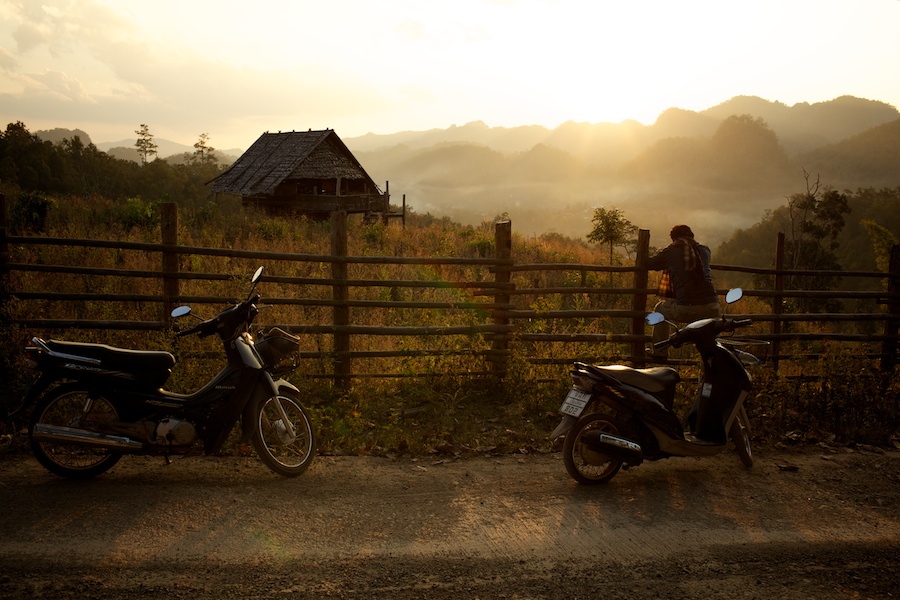
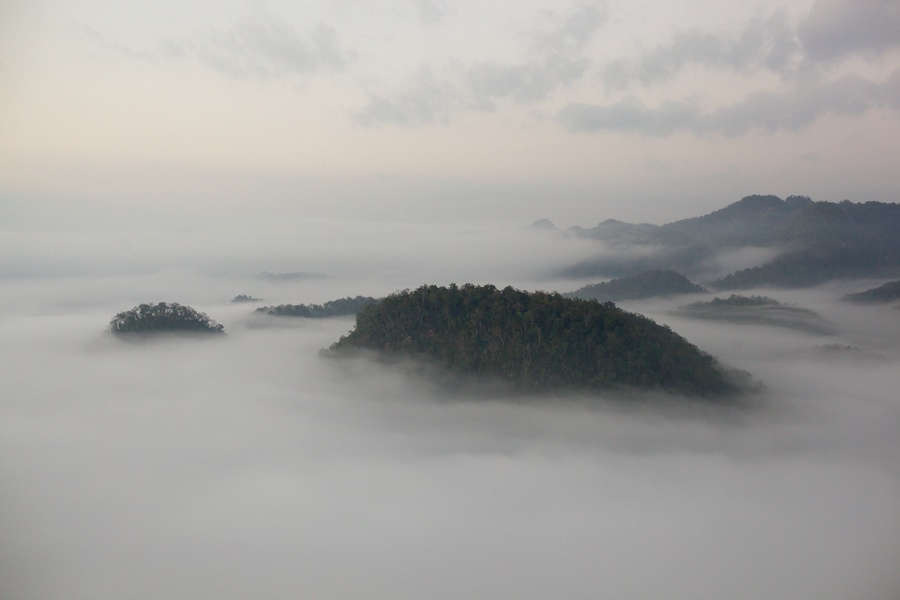
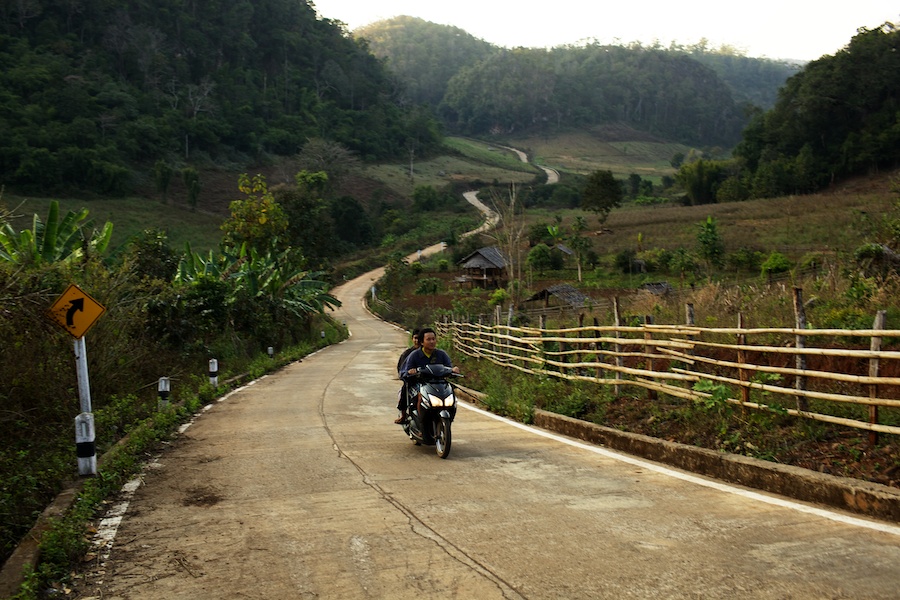
"Discovering Lund"
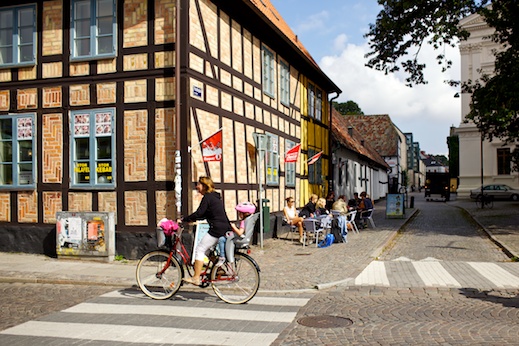

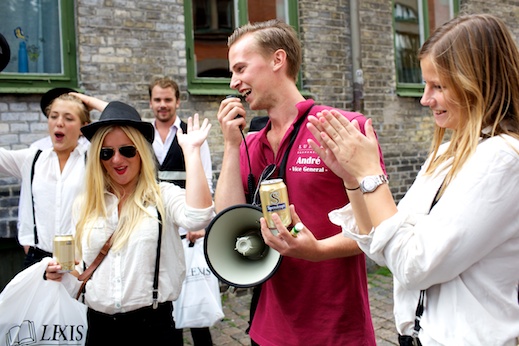
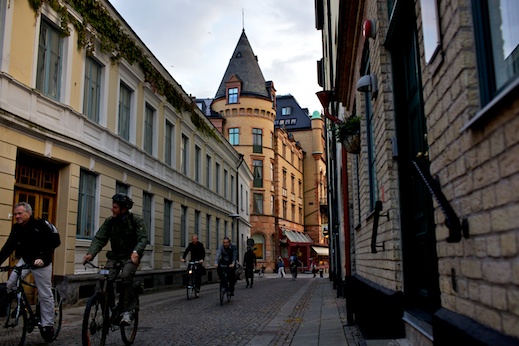
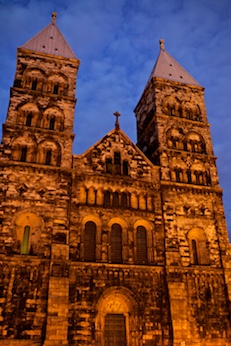
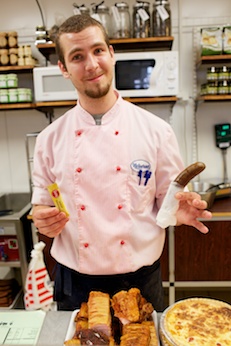
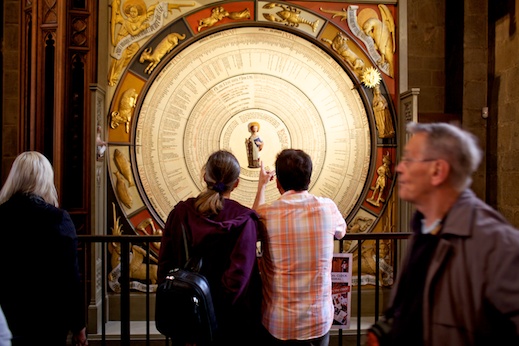
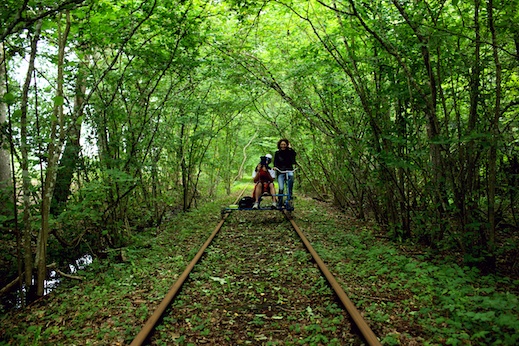
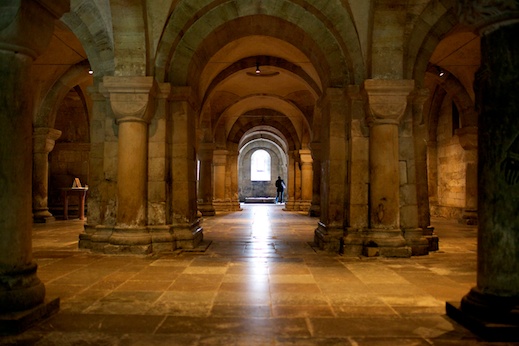
"Catching the Bamboo Train"

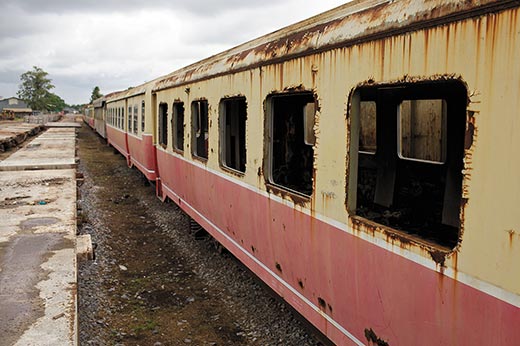
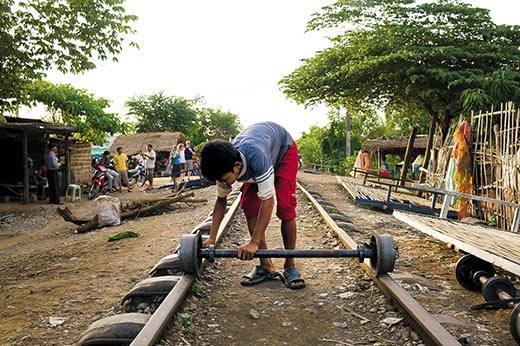
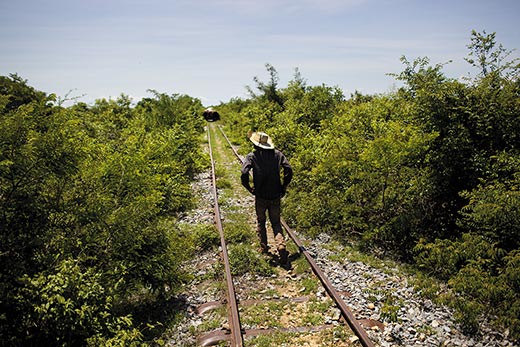
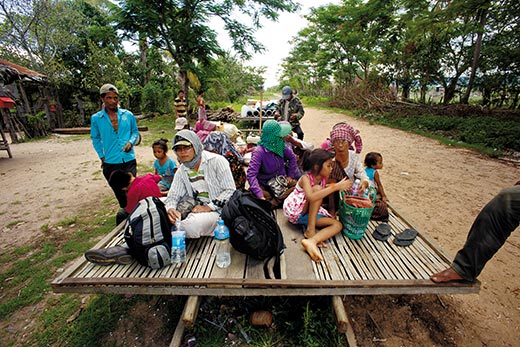
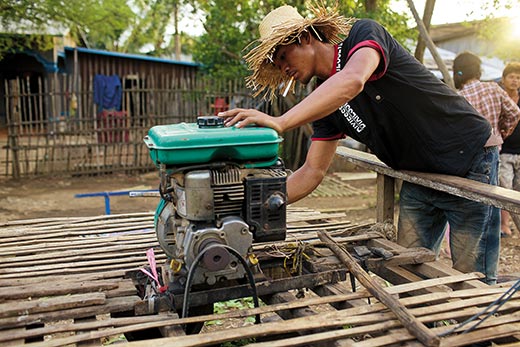
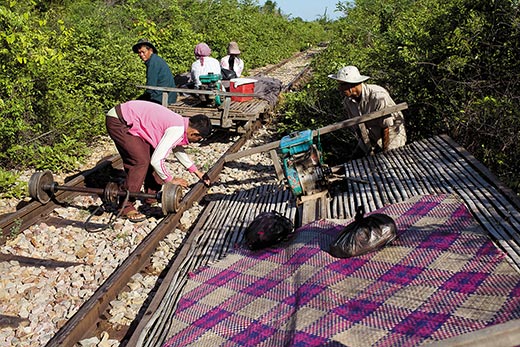
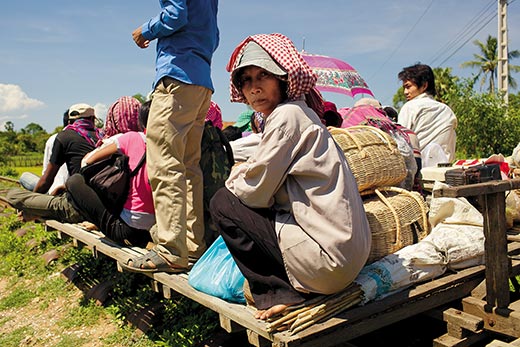
"Seoul Food"


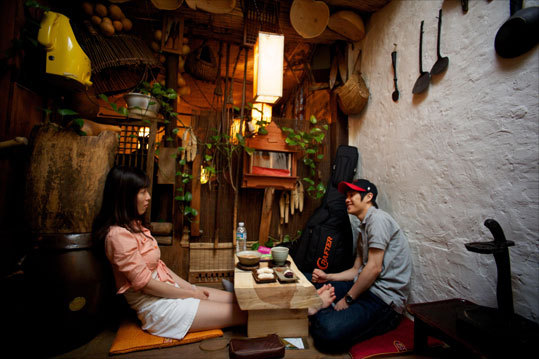

"Where Elephants Get Under Your Skin"
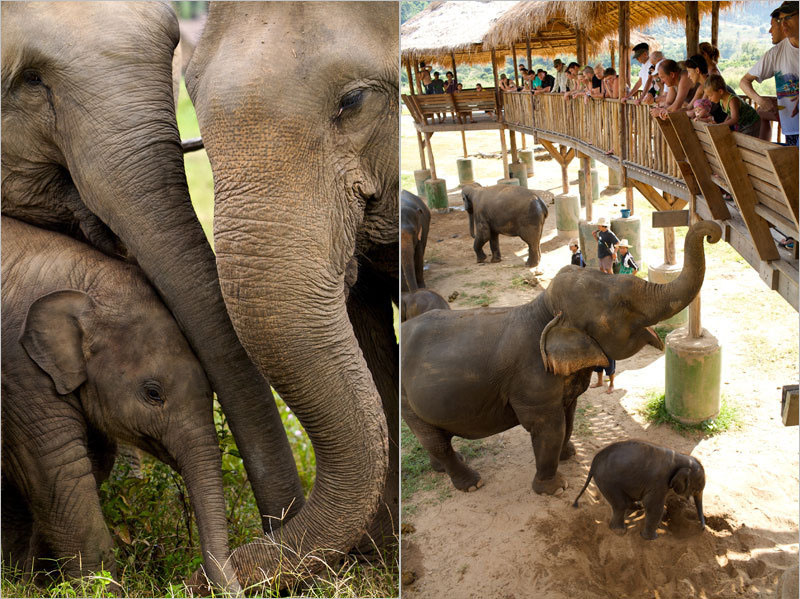
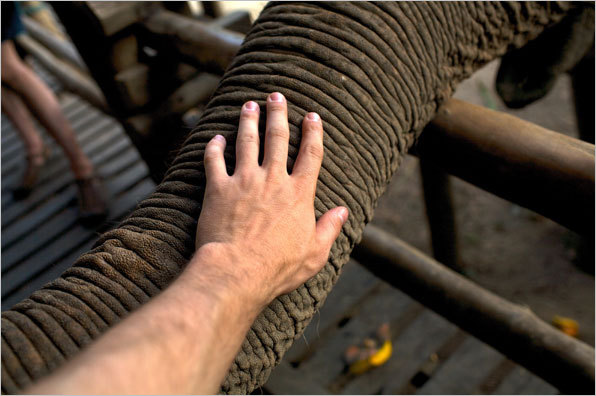
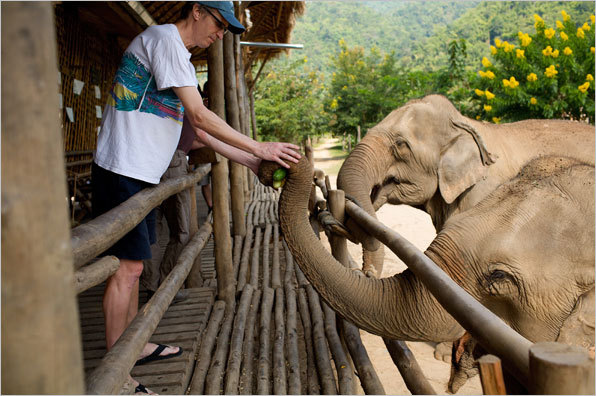
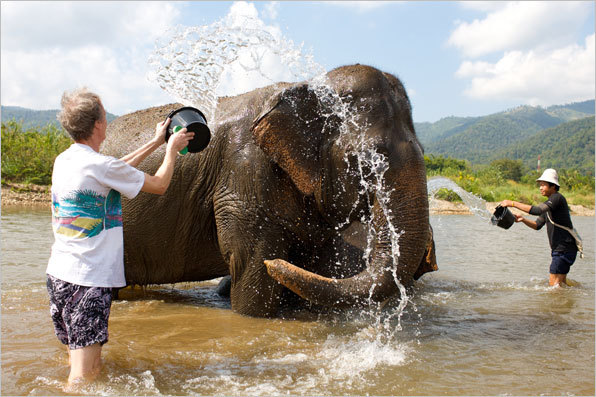
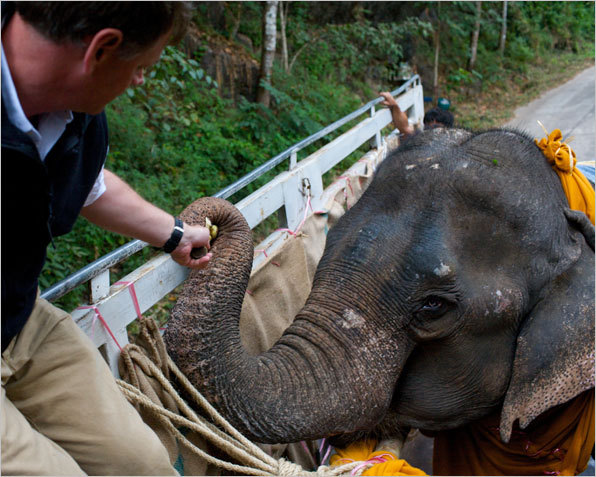
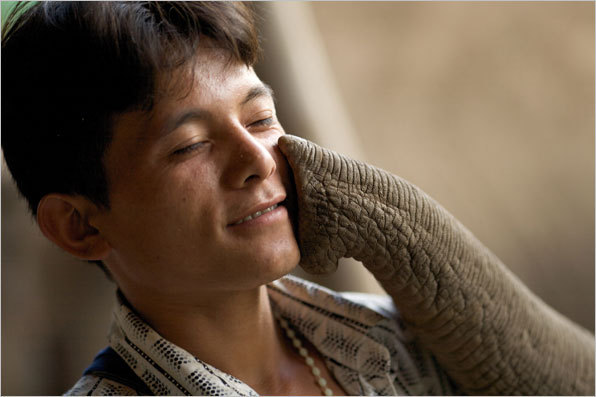
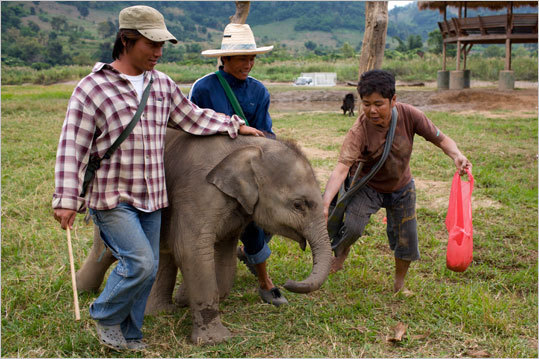
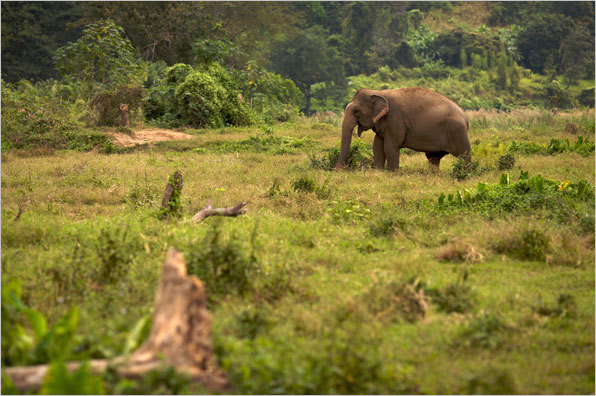
"Sledding the Alps"
